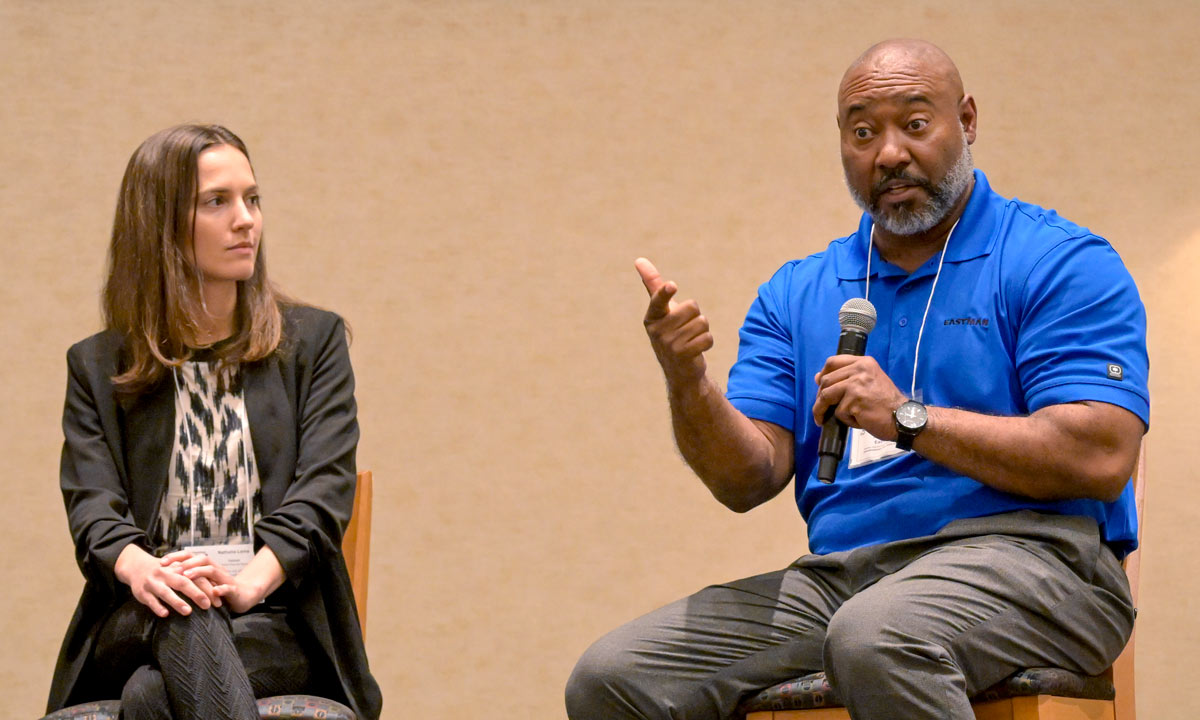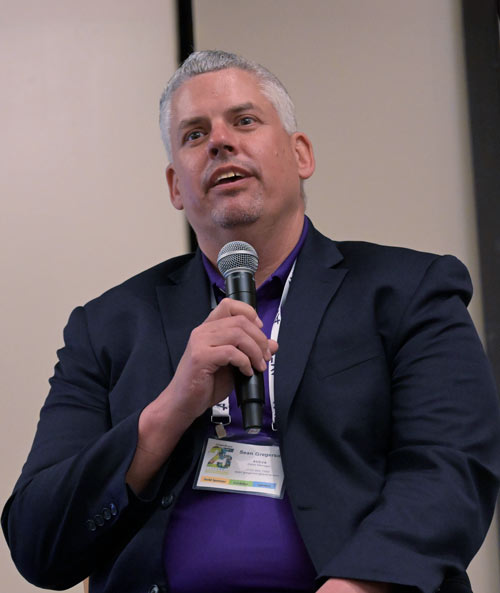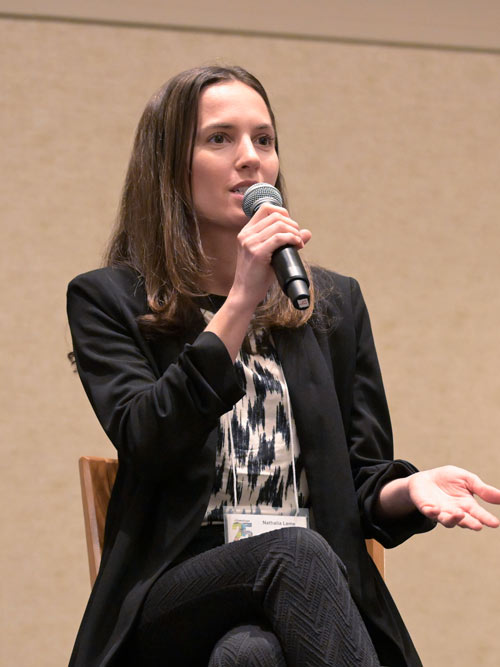Industry Leaders Explore the Transformative Impact of AI on Workforce Dynamics

So what AI means to me, really, to me AI is a tool, right, to help process information, but what's neat about it is its ability to learn and adapt …”
—Jeff Fain, Workforce Development at Eastman Chemical Company
Korkowski is the senior manager of projects and client development at IndexAR. “At IndexAR, we develop a number of digital solutions for our clients,” Korkowski said. Here at eChemExpo “in the last couple days, I’ve talked a lot about our training solutions. So we build these large training programs for our clients that consist of e-books and applications.” Korkowski said AI is a tool that can help workers. “But it really is only as good as the information you feed it,” he said. IndexAR establishes “the ground truth of data information processes that the workers need to have in place so they can safely perform their work, properly perform their work and efficiently perform their work,” he added.


Companies that leverage these technologies are going to be more productive in their approach to business and more profitable,
—Sean Gregerson, head of AVEVA’s asset performance management software business

Gregerson is head of AVEVA’s asset performance management software business. The industrial software space is largely focused on industrial data management, the use of AI, which he described as a tool to evaluate data, and machine learning for monitoring the health and performance of industrial equipment assets, he said. To remain competitive, Gregerson said companies will have to leverage AI technologies. “Companies that leverage these technologies are going to be more productive in their approach to business and more profitable,” he said. “And so, I think as we look at these technologies, we’re going to see a wave, an initial wave, where AI sort of becomes our coworker, if you will.”
Gregerson said that AI could aid in the decision making that occurs in the industry and help optimize those decisions. “I think that as we look forward further beyond that, you could get to some more autonomous operations, but I think that we’ve got a way to go before we arrive there” he added. AI technology will follow similar metrics that are available for people and processes, the panel said when Shackelford asked how companies will know whether AI “is a bad coworker.” “What we measure business success in the same way is it has to have some foundational impact that’s measurable and tangible for the business service network to make,” Gregerson said.
If AI is only bringing you the information when you ask for it, it is a search engine. AI should be something that interacts, and you start to see your workforce grow and develop at a faster rate from those interactions with AI
—Jeff Fain, Director, Workforce Development at Eastman Chemical Company.
Fain said AI can learn alongside of the person who is training with it. “When you have this system set up, I can see both sides sort of learning and growing through the process of AI and communicating back and forth,” he said. He added, “If AI is only bringing you the information when you ask for it, it is a search engine. AI should be something that interacts, and you start to see your workforce grow and develop at a faster rate from those interactions with AI.” Leme said AI can help the workforce come up with the right questions. “So I think that this brings a new perspective that we might also want AI to make those questions so we can rethink about our way of doing things,” she said.
Adoption of AI technology is key, Korkowski said. Training the workforce on how to properly use AI tools is “very important,” he added. “So leveraging it in a way where, you know, it can help you dial in the specific information you need, it is iterative, right?”
What’s on the horizon of new technology asks Brian Shackelford. Korowski spoke about Apple’s Vision Pro, augmented reality, and virtual reality technology. “As far as using that in the field, you know, it’s still got a long way to go for the safety of the worker,” Korowski said. “But I do see, and I don’t know what it could be, but I do see a lot of potential with that technology that Apple has come out with and kind of merging that with AI to develop some sort of really unique, powerful, productive, effective, you know, type of training environment for AR and VR.”


“What I think if we get the AI part of it right, and I’m going to tie it back to training, it starts to open up a whole lot of different avenues of what we need to look forward to what’s right,” Fain said. “It can change what a qualified candidate may look like.” He added, “If we can broaden that thinking around AI and actually get it to be more effective in how we train, then who you bring in, you can teach the skills, right? So now you have a much broader view of applicants and people you can bring in because your training system has adapted to a way to bring everybody from different skills up that curve faster, right?” The panel also spoke on how AI will become an effective tool in the future. Fain spoke briefly on management’s part of the process and Leme talked about making sure the tool is accurate. “I think this still will require a lot of validation,” Leme said. The industry needs to “make sure that their AI is making the right decision and going in the right path,” she added.
Following Shackelford’s question and answer session, the moderator opened questions to the floor. The first person asked the panelists about their first AI experience. “It was using Chat GPT, but I can’t remember what the question was,” Gregerson said. “I was quite amazed at the answer, and I typed the question and again it seemed like the same answer was different, so that’s why I was really amazed.” Korkowski said he remembered that when Chat GPT was introduced people were assuming it could replace certain jobs. “And really I remember going down, or just really wanting to understand it myself because I really couldn’t believe that, and I don’t, I mean, majority of the workforce that we work with, are our client’s workforce, I mean, I see it as a tool for them, right?” Korkowski said. “To make them more efficient.” If the AI tool does not make the workforce more efficient, ‘the system will break, whatever system you’re a part of,” Korkowski said. “So I remember wanting to better understand that because there were a lot of misconceptions out there.” Leme and Fain said they were originally skeptical and frustrated with early AI. “Well, now, I have a different perspective,” Leme added. “I guess my perspective is, ‘wow, this can be really great,’” Fain said.
I think this still will require a lot of validation. The industry needs to make sure that their AI is making the right decisions and going in the right path.
—Nathalia Leme, Industrial Internet Manager at Valmet





